Frozen Bubbles
This post may contain affiliate links. See our disclosure policy for more details.
What do you do when you wake up and the temperature is -1F? Develop a recipe for frozen bubbles, of course!
Over the years I have had lots of photography friends post photos of frozen bubbles. Some shared recipes. No one said how challenging, but FUN, it would be to get some of my own.
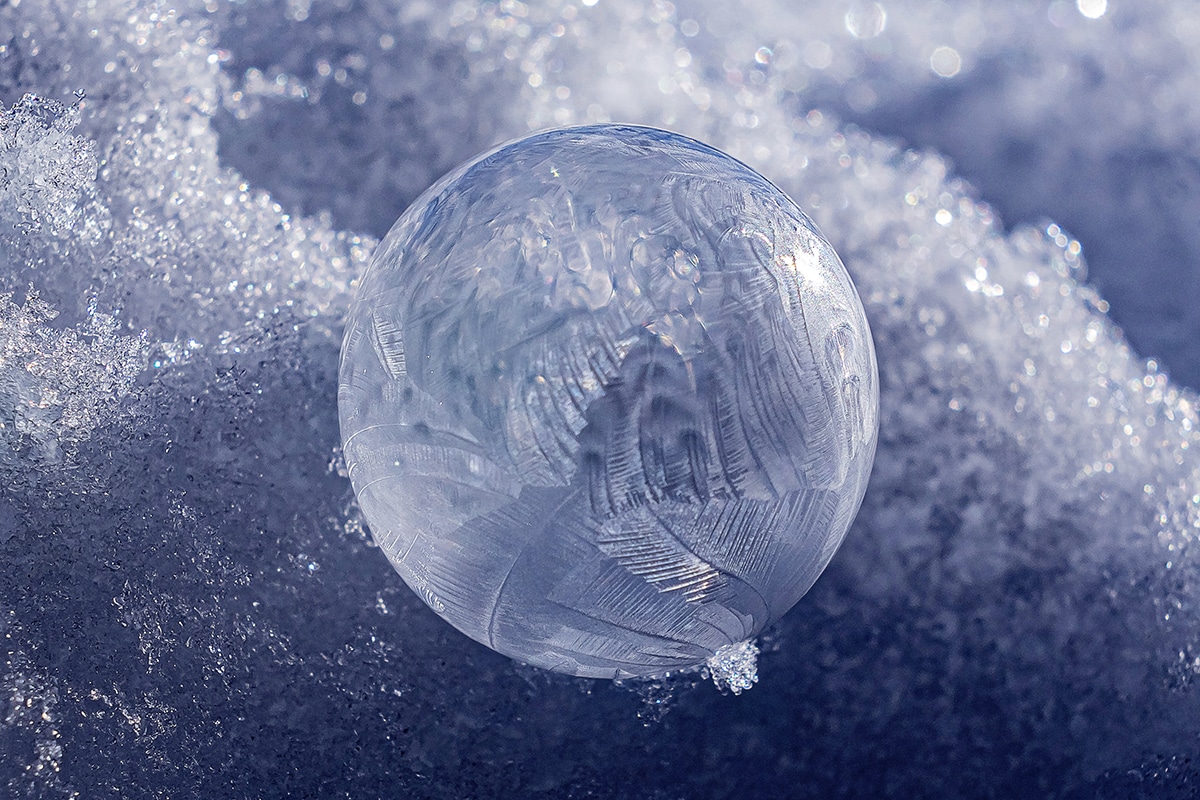
This morning, I decided that it was time to try my hand at it.
I will share the recipe that I started with and what actually worked so that you don’t have to spend 3 hours in the cold!!! My husband may have been questioning my sanity.
How to make Frozen Bubbles
What you will need:
- Bubble solution
- Bubble wand or large straw
- A black piece of paper
- Cold, cold day
- Little to no wind
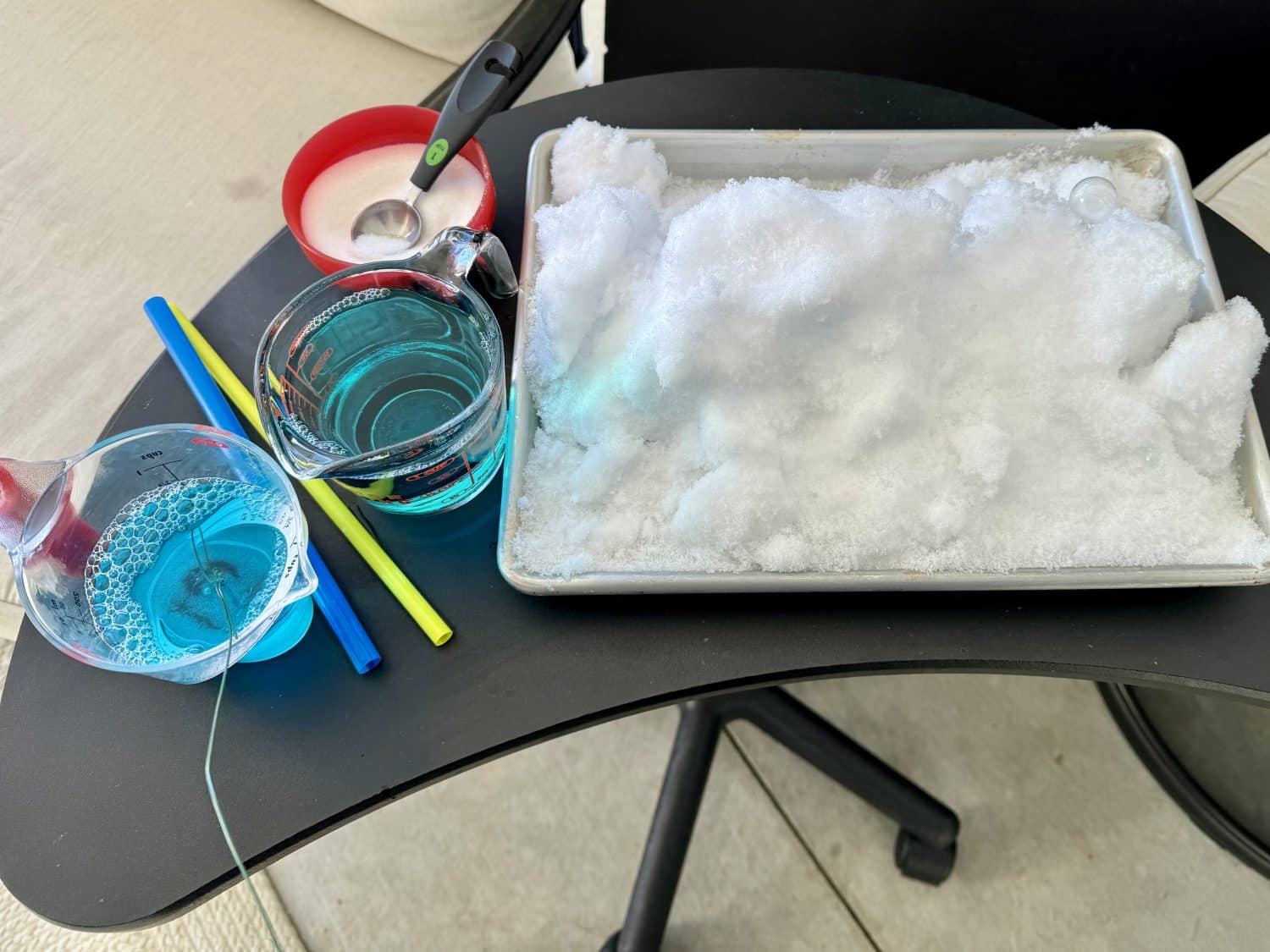
Frozen Bubble Solution
I started with three different solutions:
- 3/4 cup water
- 2 tablespoons liquid dish soap (I used Dawn)
- 2 tablespoons corn syrup
- 1 tablespoon white sugar
and
- 3/4 cup water
- 2 tablespoons liquid dish soap
- 2 tablespoons glycerin
- 1 tablespoon white sugar
and
Ready-made bubble solution (which did not work AT ALL, so this is the last that I will mention it)
My Frozen Bubbles Trial and Error story
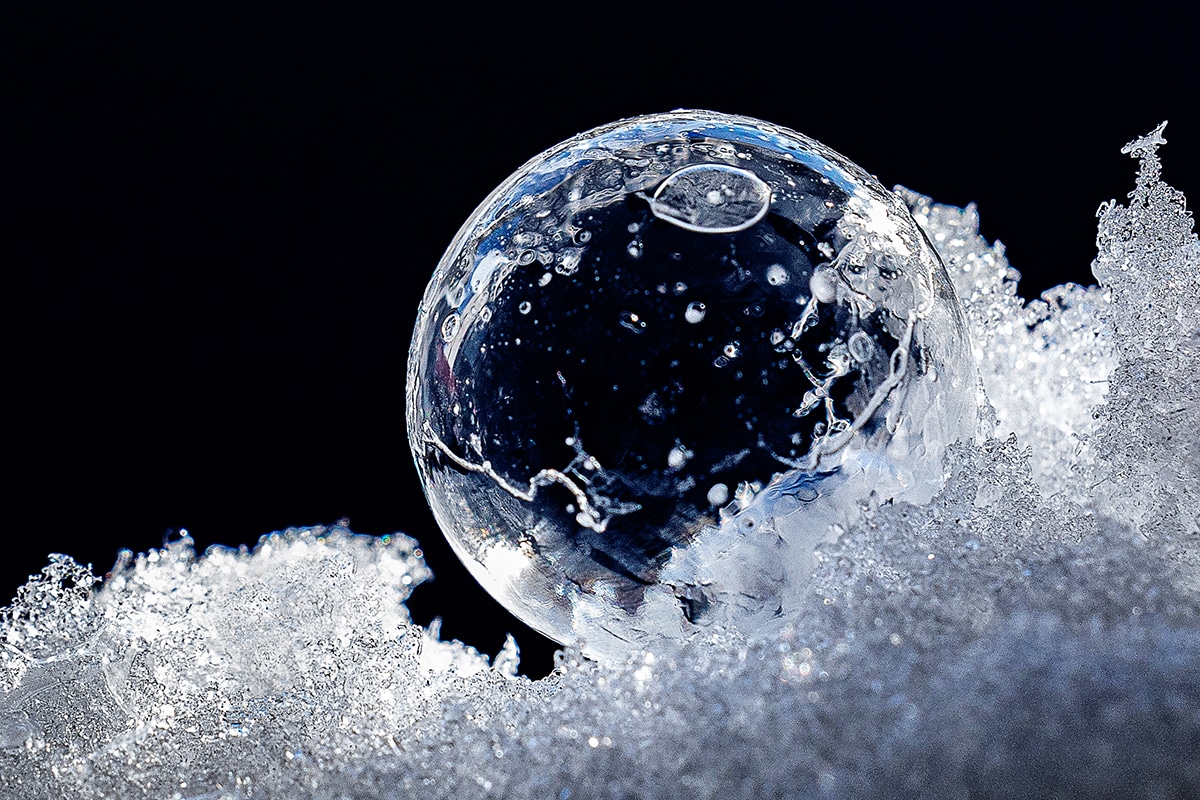
Ideally, you should make your solution the night before and let it sit in the refrigerator overnight. This allows the mixture to cool, blend, and settle.
I didn’t think ahead that far, but I did put the solutions in the freezer for 15 minutes as I set everything up outside.
None of the solutions were ideal.
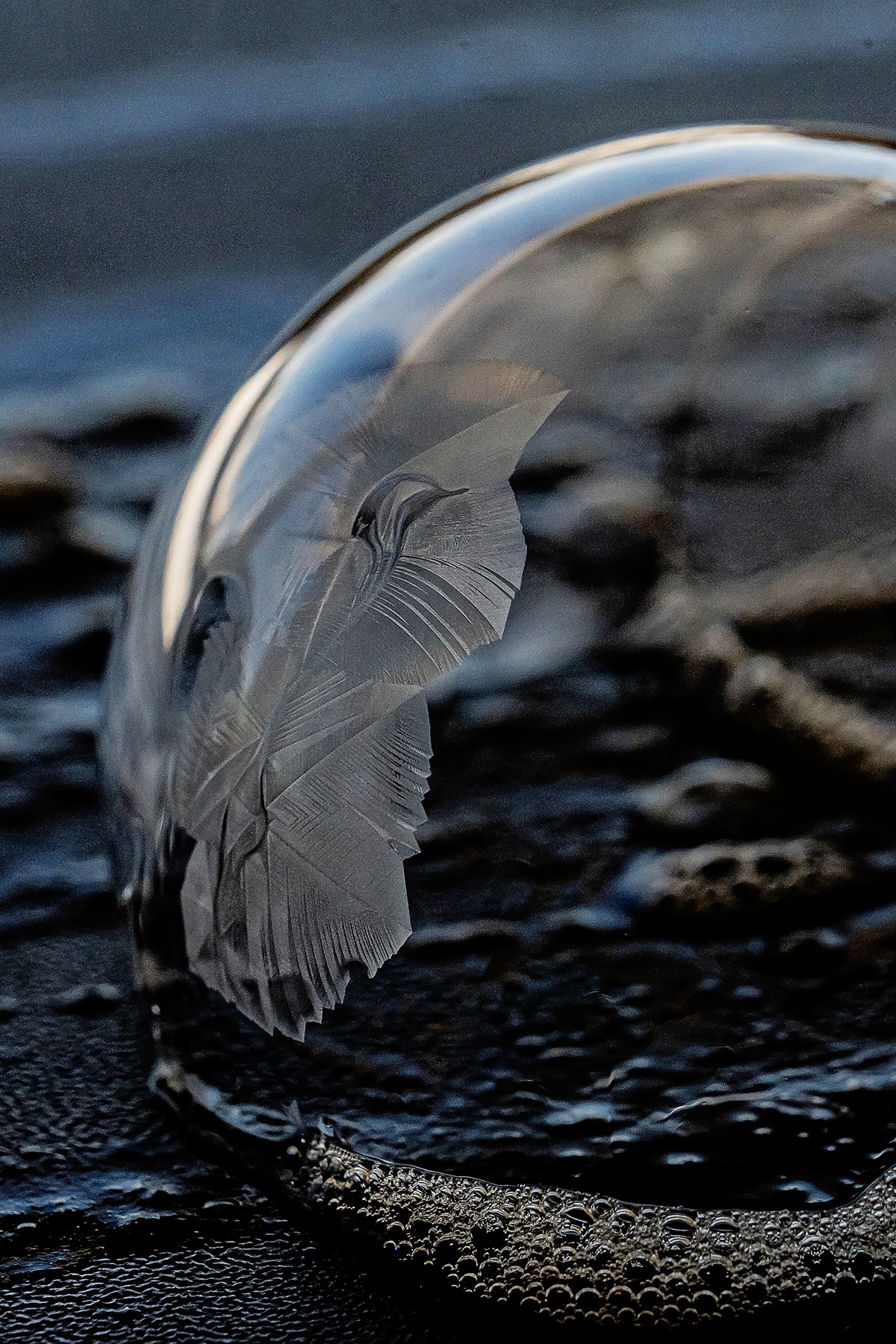
What I had been told was to blow bubbles into the snow, so I put some snow on a 1/4 cookie sheet and set it up on my rolling laptop desk.
The bubbles were popping as soon as they were blown. Nothing lasted long enough to even land on the snow.
Back into the house, I went, grabbing the liquid soap, corn syrup, and glycerine. I added a tablespoon of liquid soap to each solution first and then stirred well. This helped to make the bubbles last longer but they were still popping as soon as they landed on anything.
Next, I added a tablespoon of corn syrup and glycerine to their respective mixtures. This helped.

Ultimately, what worked the best for our weather conditions was to combine the two solutions. I wish that I could say that it was a sheer stroke of genius that led me to do this. Alas, it was my clumsiness.
As I was trying to roll my cart, I knocked over one of my measuring cups of solution (yes, this is going to be “fun” to clean up…in the spring…because it is too cold to do anything about it now…don’t tell my husband).
So – let’s add some kind of tray to put your solution on to that list of supplies you will need so that you don’t have dish soap all over your patio like we do.
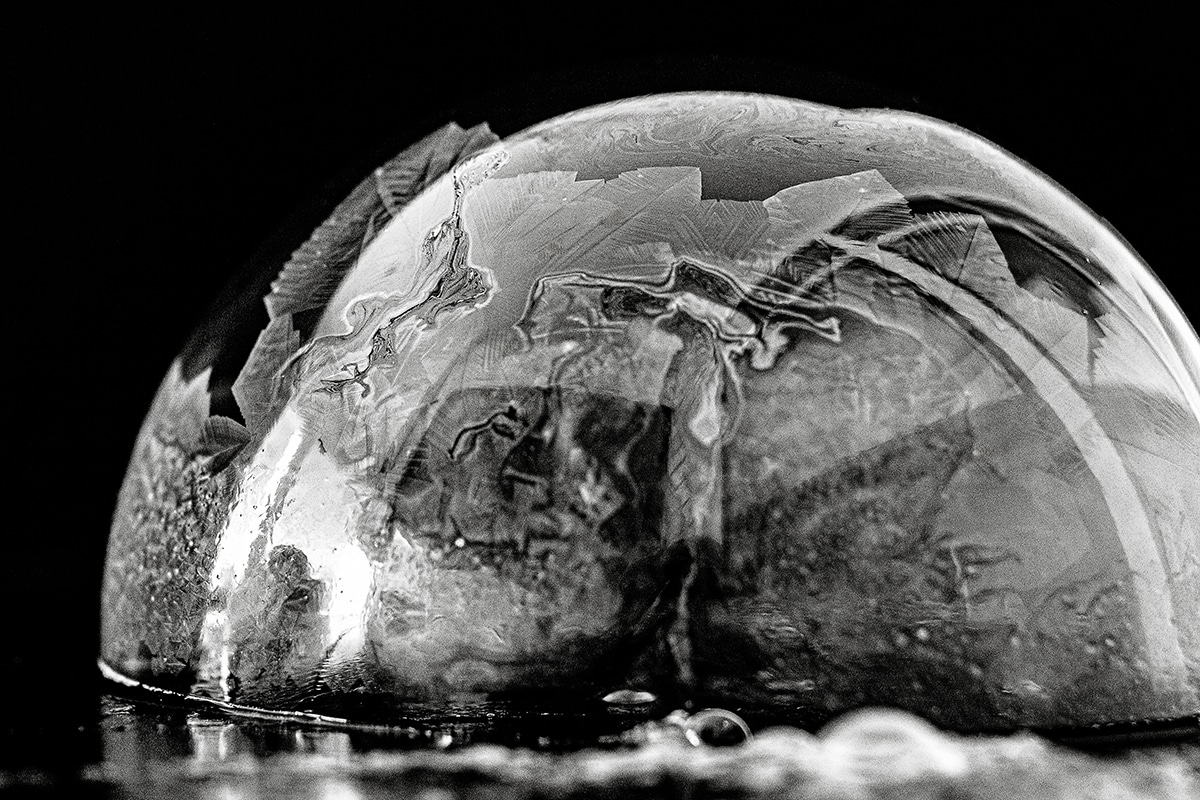
What can I do if my bubbles are popping?
If your bubbles are popping immediately upon being blown, you may need to adjust your bubble solution to make it more stable. Here are a few things to try:

- Increase Soap Content: your soap concentration could be too low for your weather conditions. Try adding more soap to the solution to stabilize the bubble film.
- Check Water Quality: Consider using distilled water, which is purer if you’re using tap water with high mineral content, it could impact the stability of the bubbles.
- Add More Corn Syrup or Glycerin (which acts as a humectant that helps retain moisture): Increasing the amount of corn syrup or glycerin in your solution can enhance the longevity and flexibility of the bubbles. This added moisture retention can prevent bubbles from popping too quickly.
- Mix the Solution Thoroughly: Ensure that you mix the solution gently but thoroughly.
- Let the Solution Age: Allowing the bubble solution to sit for a few hours or overnight can sometimes improve its performance.
- Experiment with Ratios: If none of the above suggestions work, consider experimenting with the ratios of water, soap, and humectants. You may need to find the right balance for your specific conditions.
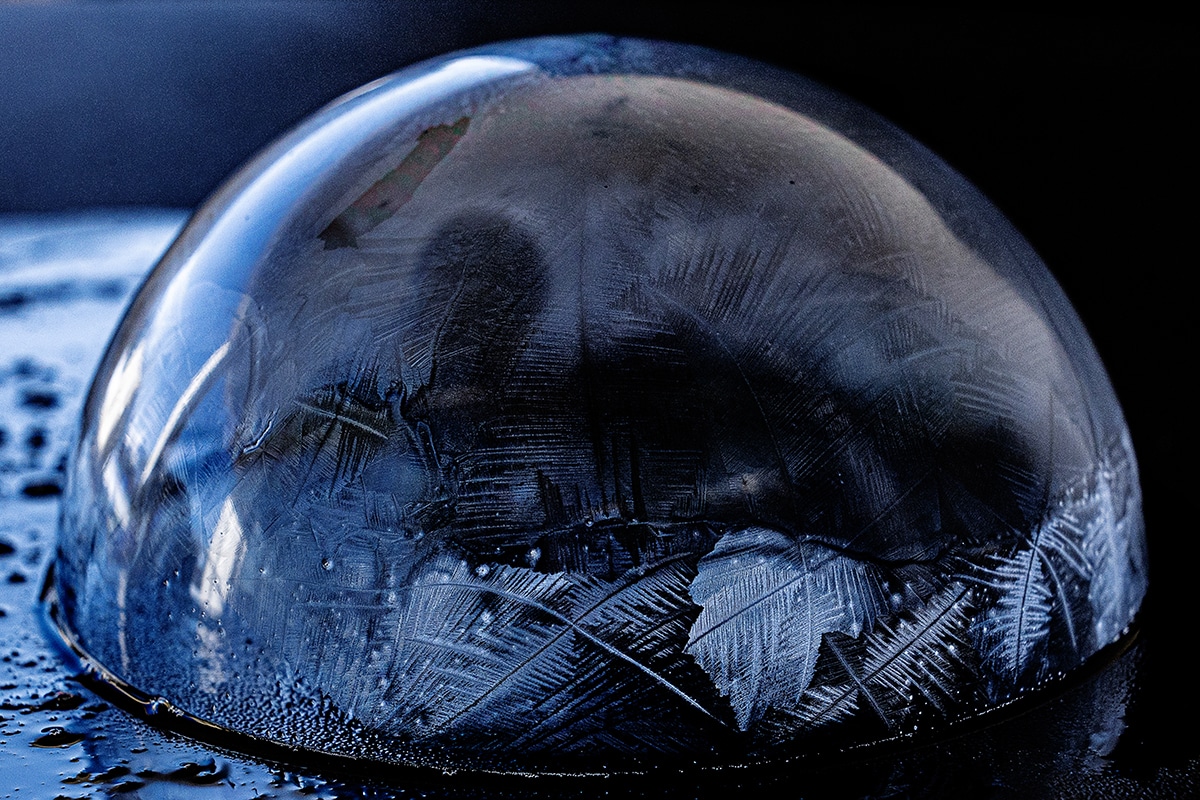
My new recipe for frozen bubbles
This works for our climate (low humidity) and the temperature today (-1º F to 3º F).
- 3/4 cup water
- 3 tablespoons liquid dish soap (I used Dawn)
- 1 1/2 tablespoons corn syrup
- 1 1/2 tablespoons glycerine
- 1 tablespoon white sugar
Remember that environmental factors, such as temperature and humidity, can also influence bubble formation. It may take some trial and error to find the perfect bubble solution for your particular circumstances.
Straws or Bubble Wand?
I thought that my homemade bubble wand would be ideal, but the large straw was the clear winner. To make the want, I took some floral wire and twisted it into a quarter-sized circle.
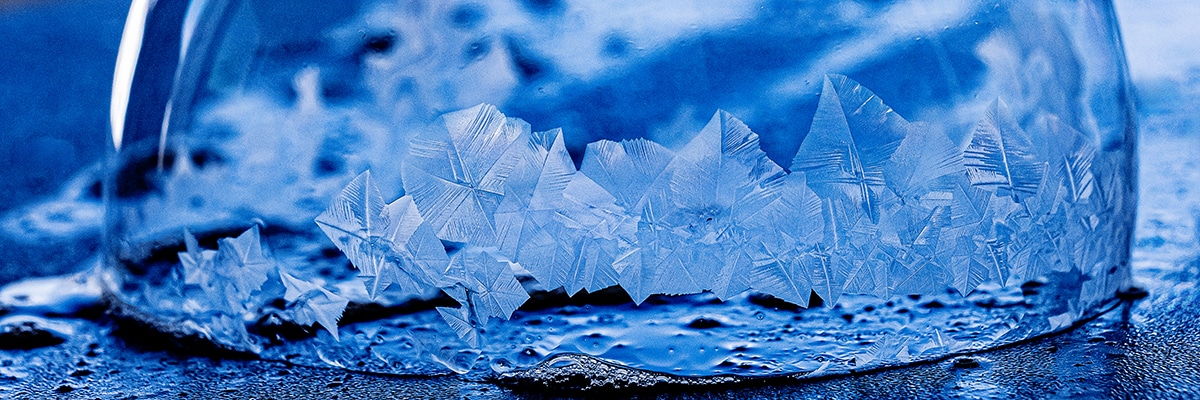
Getting the shot
I shoot with the Canon R5, R6, and 1dx III. I used the R6 today and I had the RF 100mm 2.8 Macro on the camera. The settings that I started with are:
- 1/500
- f/11
- ISO 100
If that is Greek to you, put your camera or cell phone on its portrait mode and call it good!
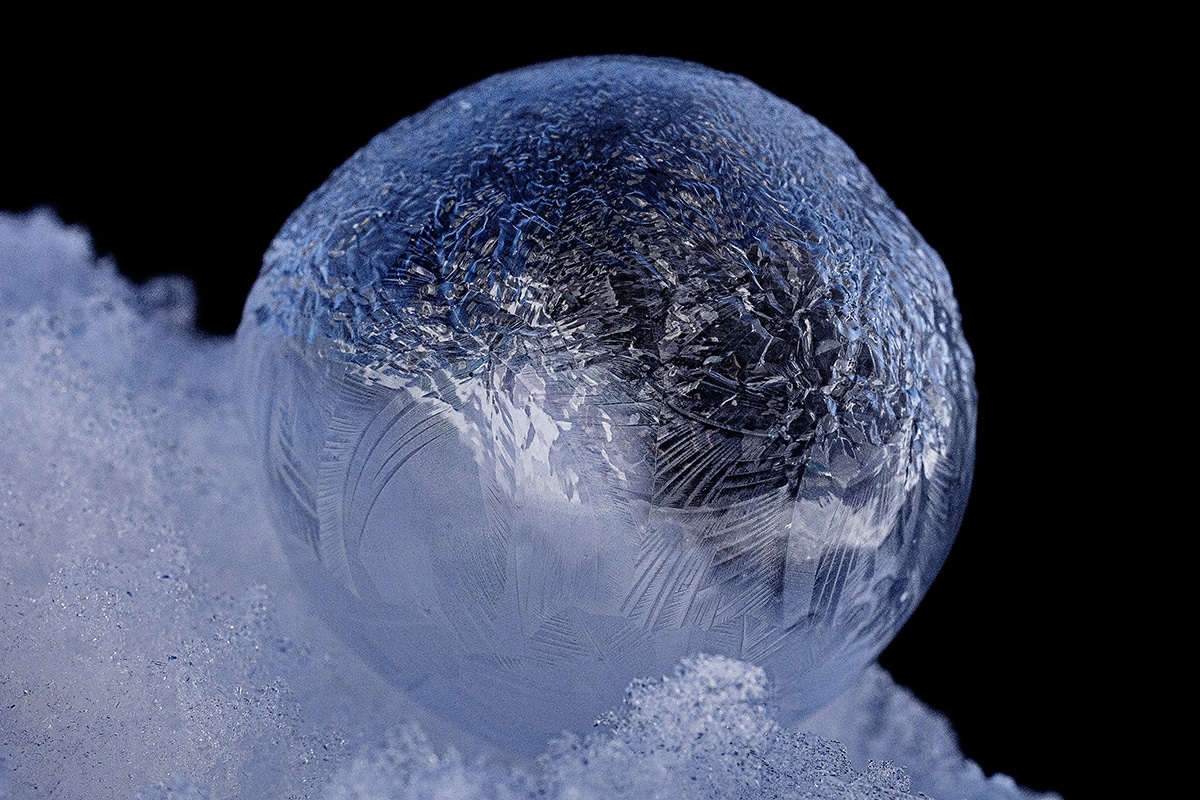
I pretty much kept the shutter speed and aperture the same and adjusted the ISO as needed as I went from full sun to partial sun, and then into shade.
I like strong contrast for these types of images, so I used the black paper behind and/or to the side to increase the white-to-black ratios. Really, it was trial and error, so be prepared to move around, block the sun, go into the sun, and shield the bubbles from the wind.
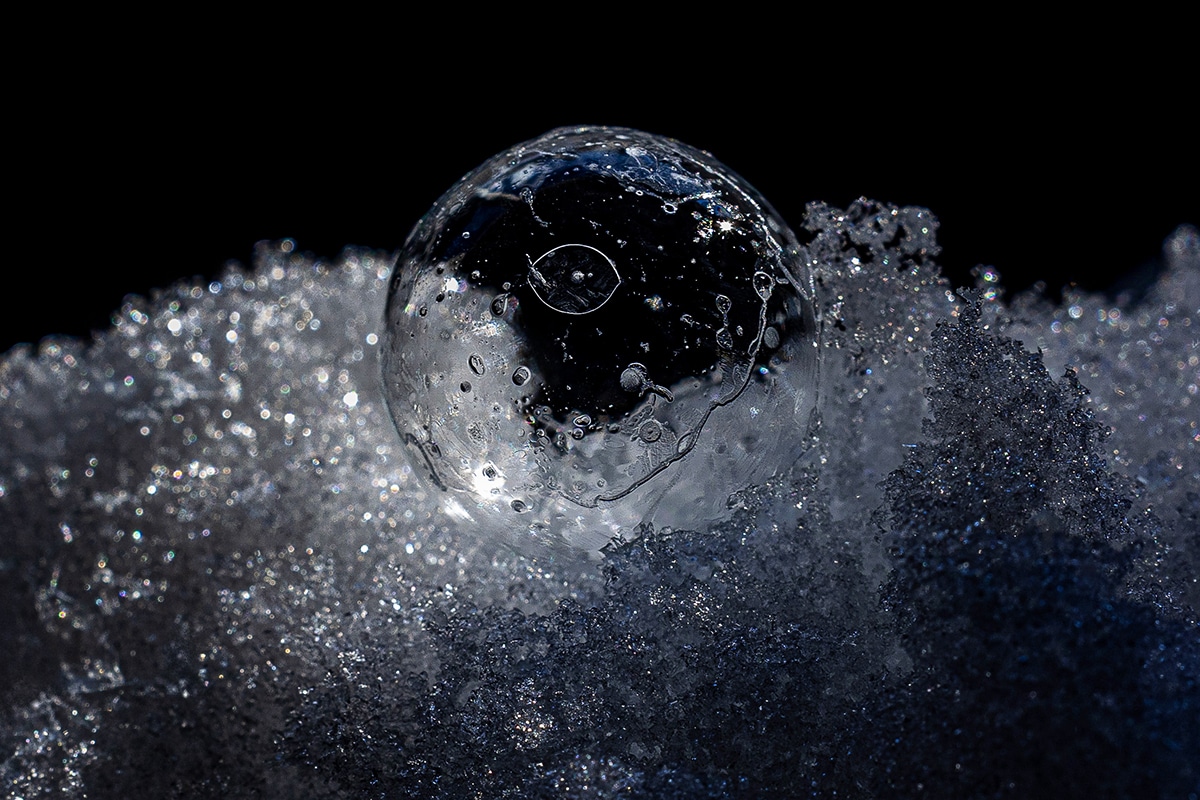
Speaking of wind, the best times to make your frozen bubbles are early in the day and in the evening before the sun goes down, as this is when the wind will be least forceful. Even a small breeze can cause your bubbles to pop, so finding a protected area can prevent a lot of frustration.
Bundle the kids up and make some memories. I can’t wait to see the beautiful bubbles that you make. Leave us your recipe in the comments and send us a picture on Instagram so that we can brag on you!!! (https://www.instagram.com/sheshared/)
